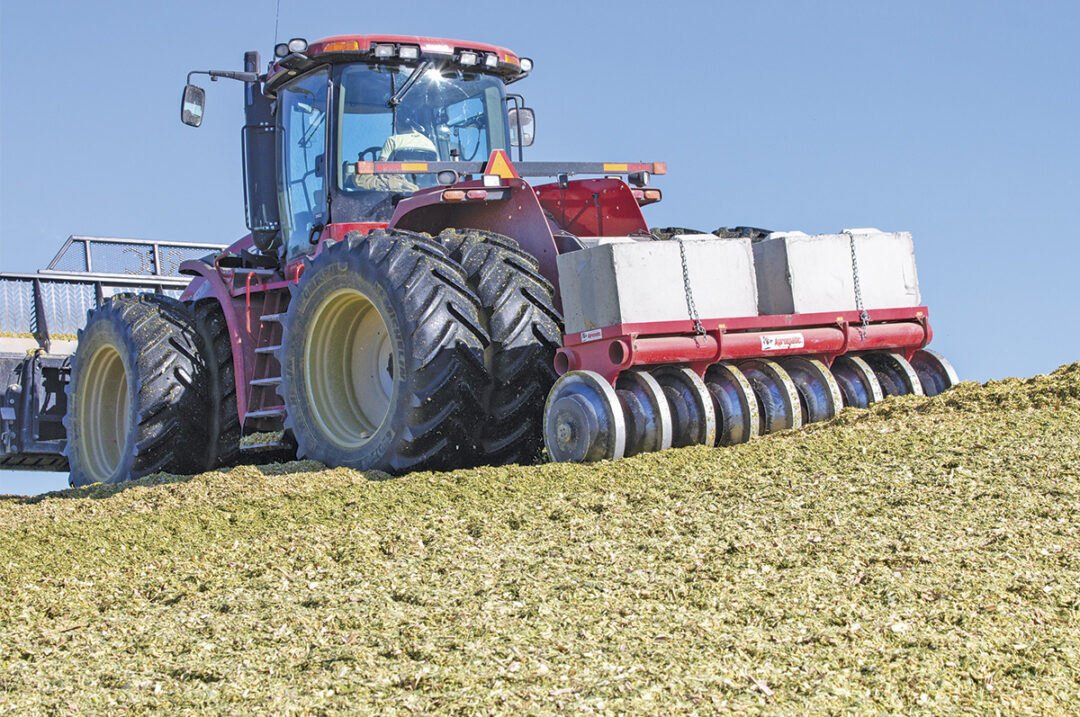Variability is the one constant dairy producers can count on. Unfortunately, cows appreciate consistency and do best when things stay the same on a daily basis. That’s why most of the actions taken on a dairy are designed to remove or at least significantly reduce variation.
Mother Nature has other designs though, and throws weather variability into the equation. Each year and each growing season is different, which means the forages you have in storage from harvest 2023 are probably not the same as forages you fed the year before. As we turn the calendar on a new year, it is a good idea to make a plan for how you are going to feed those forages to keep cows healthy and productive.
Every region of the country is different when it comes to weather, but a vast majority of dairy country saw dry weather in 2023. Dry weather usually means that forages had higher quality, but total tonnage is probably down. Plus, dry weather typically means more mycotoxin pressure. There are a few actions you can take to help reduce variability and get the most from your 2023 forages.
Start with the basics
Since we’re accustomed to change and variability, there are a few boxes you should always check as part of your forage harvest process. You should grab a forage analysis at harvest, and you should get another analysis before you feed it. You should implement a good training program so your feeders are following good protocols, such as proper face management and good mixing and delivering technique. You should take dry matters regularly and manage refusals so cows get enough to eat without wasting feed. If you’re following these basic protocols, you’ve covered the first step to mitigating variation in your feeding program.
But there is more to managing forage variation that can be done as you feed it. Follow three basic guidelines to reduce variability.
1. Control pathogens: In years when wet weather impacted harvest, pathogen pressures are more prevalent because there is more opportunity for dirt and mud to get picked up during harvest. Even though this year most of the country had dry weather during harvest, pathogens are still a risk, and even when the best feed-handling and hygiene techniques are used, pathogens can find their way into the cow’s digestive tract. Pathogens such as salmonella, E. coli and various strains of clostridia are present in the environment and can be harmful when found in the gut.
Bacillus technology can inhibit pathogen populations in the gastrointestinal tract and improve hindgut integrity. A research study involving 77 dairies and 230,000 cows across 18 states found that bacillus feeding reduced the risk of clostridia and C. perfringens challenges. Bacillus feeding resulted in an 89% increase in the number of fecal samples classified as low risk for clostridia challenges, and a 13% decrease in the number of samples classified as high risk. When looking at risk of C. perfringens challenges, a 20% increase in the number of low-risk fecal samples and a 26% decrease in the number of high-risk samples was observed with bacillus feeding.
In addition to bacillus products, refined functional carbohydrates (RFCs) are highly bioavailable and help support digestion in the rumen while simultaneously protecting the hindgut from pathogens and mycotoxins. Research documented the effect of RFCs on pathogen binding, specifically salmonella and E. coli. One study found that S. Newport, S. enteritidis, S. Dublin and S. cholerasius were all effectively bound in the presence of RFCs. Similarly, E. coli F18 was also effectively bound by RFCs.
2. Manage mycotoxins: When it comes to mycotoxins, it is not a matter of if mycotoxins are present, but what kind are present. Like pathogens, mycotoxins are ever-present in feed ingredients, so testing is important to understand what types of mycotoxins are present and at what levels. This year is even more important because mycotoxins can be found in higher levels in drought-stressed corn. With dry weather impacting much of the corn-growing regions of the U.S., it is a good bet that mycotoxins are present in your forages and feed ingredients at some level.
In a research study, RFCs were found to effectively bind mycotoxins, resulting in a significant reduction in epithelial cell damage due to the mycotoxins Aflatoxin, T-2, DON, Zearalenone and Fumonisin B1.
3. Don’t forget digestibility: With pathogens and mycotoxins under control, it is important to not forget about digestibility. While fiber digestibility in the forage samples you took at harvest will look about the same at harvest as it does at feeding, starch digestibility could be significantly different. The longer forages are in storage, the more starch digestibility will improve, so adjust rations accordingly. Work with your nutritionist to identify optimal testing periods and protocols to stay on top of starch variability.
The impact of forage variability can be reduced if you can stay ahead of the game. If you take good forage samples and balance rations based on the results, you can adjust ration parameters to fit the changing nutrient and fiber composition and varying starch digestibility. If you incorporate feed ingredients into the ration that bind pathogens and mycotoxins, you will reduce each of their impacts on cow health and performance. You can also do things to keep the rumen functioning properly, like making sure adequate levels of rumen buffers are in the ration and enough metabolizable protein goes past the rumen so that essential amino acids can be supplied to the cow.
As long as Mother Nature impacts the growing season, forage variability will be a challenge when it comes to feeding the dairy herd. Work with your nutritionist to take steps to reduce forage variability and protect cows from the pathogens and mycotoxins that can wreck cow health and performance.








